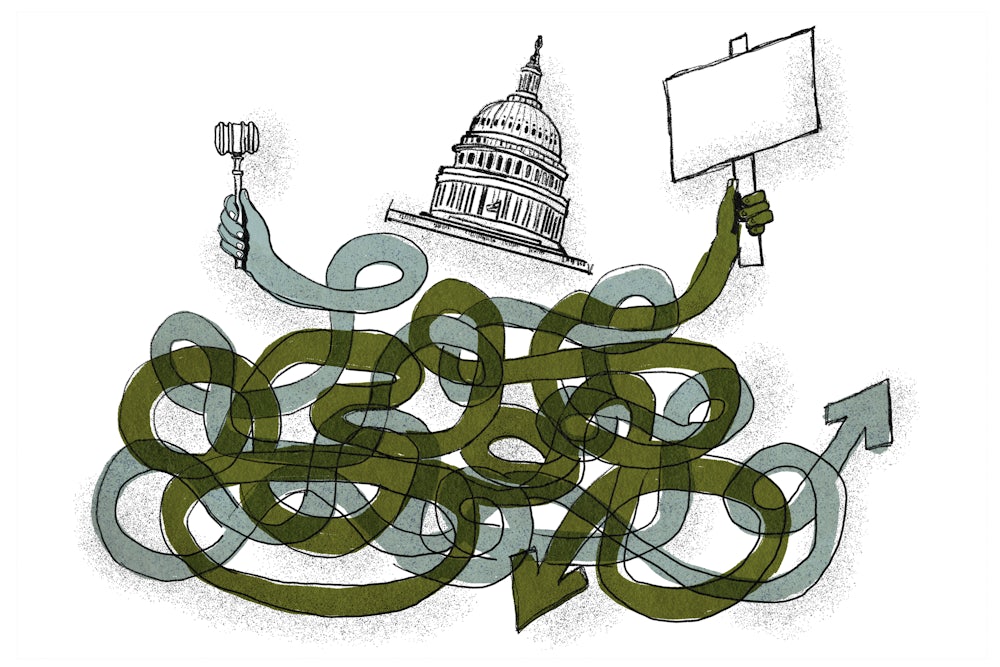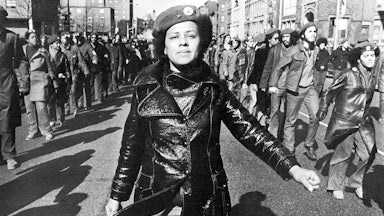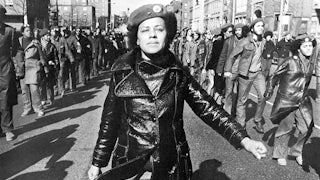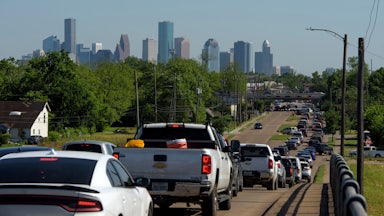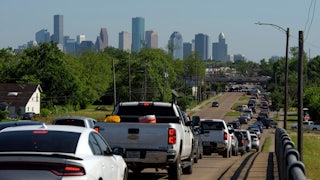In 1950, the historian Henry Steele Commager wrote about the Tennessee Valley Authority, the New Deal agency that brought electricity and economic development to seven states in the rural South. It was, he said, no less than “the greatest peacetime achievement of twentieth-century America,” a triumphant alliance of “science and politics.” Speaking with an absolute confidence that is hard to imagine in the present day, Commager asserted that the history of the TVA demonstrated beyond a doubt that “public intelligence can operate most effectively through government and that government can be more efficient than business.”
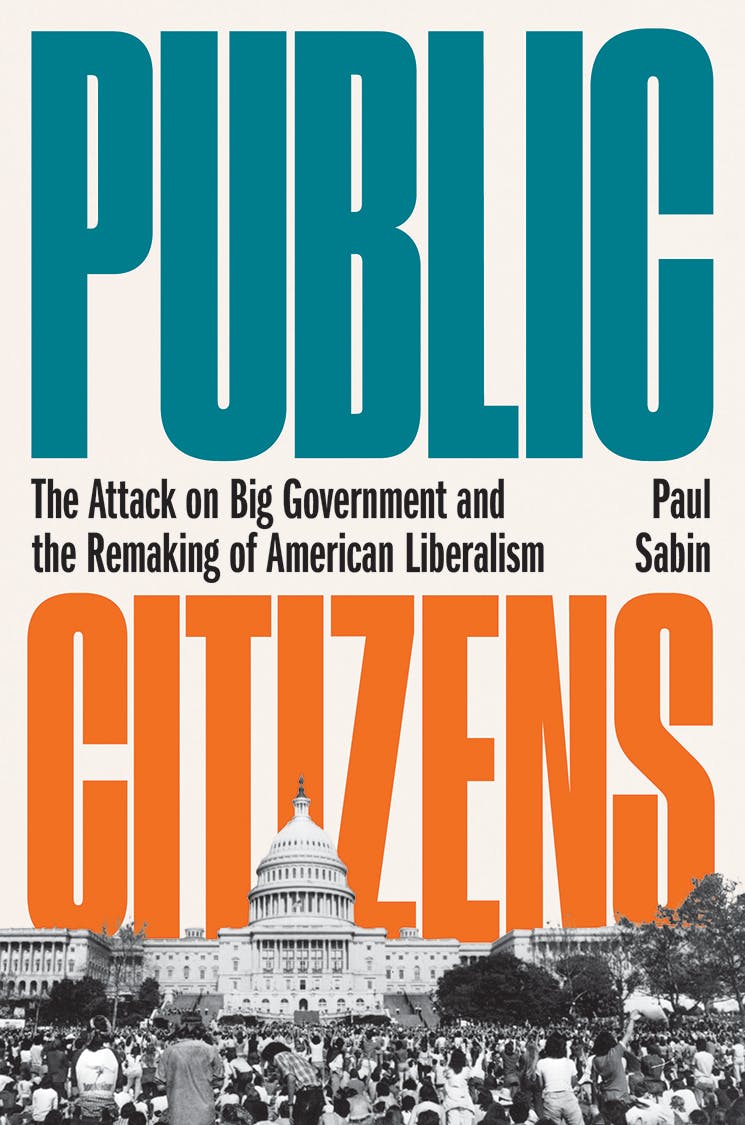
What accounts for the retreat of postwar liberalism? Why did Commager’s enthusiastic praise of government initiative decline into the “reinventing government” of the Clinton years? Much of the scholarship on the rightward shift of the late twentieth century has focused on the growing power of the conservative mobilization. The radicalism of the New Left, the civil rights and Black power movements, the gay and lesbian rights movement, and feminism all alienated the older white working class, driving it away from the Democratic Party and into Reagan’s waiting arms. Meanwhile, the business antagonists to organized labor and the expanded federal government had been patiently organizing, awaiting their moment. They were joined by suburban conservatives in California and in the New South, who sought ways to preserve their property and their affluence. The activist foot soldiers of the right joined with the intellectual and think-tank leaders, who in turn worked with the Chamber of Commerce and a new generation of conservative politicians to win political power during the troubled 1970s, when the political economy that had underwritten liberal idealism foundered and economic growth slowed.
In this earlier telling, the fragile entities of government and labor could not help but give way before the relentless onslaught of the right. Newer work does not let liberalism off the hook so easily. The decline of the liberal order, historian Paul Sabin argues in his new book, Public Citizens, reflected a serious intellectual and moral critique, focused on the capture of government agencies by private corporations, the ossification of labor and the state, and the complicity of the Democratic Party in channeling money and power to the business class. What is surprising is that these political ideas and arguments emerged not in conservative circles, but among liberals themselves, and they were popularized by a new kind of political organization that was developed over the course of the 1970s: the public-interest research group and law firm, which sought to advance political change through lawsuits and consumer representation, not mass mobilization.
Sabin’s book joins a number of recent histories that explore the tensions within liberalism in the 1970s, including Lily Geismer’s study of suburban liberals, Don’t Blame Us, and Daniel T. Rodgers’s Age of Fracture. These works uncover the extent to which liberal intellectuals and activists helped popularize the very critique of government and labor that would propel their antagonists to power. As Sabin puts it, scholars who focus only on the conservative mobilization “fail to explain why the New Deal regulatory state became so vulnerable to conservative critique” in the first place. They cannot make sense of how the actions of liberals and the left hastened its demise, and “why liberals struggled to create a coherent alternative to market-oriented conservatism.” Today, as political commentators argue (perhaps prematurely) over whether Joseph Biden more closely resembles FDR or LBJ, a study of the internal divisions in liberalism in the 1970s might well highlight the limits of the postwar order—and serve as a reminder of the dangers of the politics of liberal nostalgia.
Sabin opens his narrative with the writers and social critics of the 1950s and 1960s, who took aim at the arrogance of the bureaucratic state. In her 1961 polemic, The Death and Life of Great American Cities, Jane Jacobs proclaimed her hostility to Robert Moses–style government planning, which she said was giving rise to “monotony, sterility and vulgarity” in the urban landscape. Rachel Carson, in her 1962 Silent Spring, charged not only private companies but also the government agencies that were supposed to regulate them with rampant and dangerous use of pesticides. “The fundamental wrong,” she said in 1963, “is the authoritarian control that has been vested in the agricultural agencies.” And Ralph Nader’s exposés—while initially directed at private companies, most notably at the automobile giants he criticized in Unsafe at Any Speed (1965)—also took aim at the regulatory state, which he argued had been captured by the private sector it was supposed to rein in. Nader’s reports investigated not only industry but also labor (siding with the dissidents in the United Mine Workers, for example) and even Congress itself.
Nader is a perfect case study for Sabin. The youngest son of a Lebanese immigrant family (which owned a small restaurant-bakery in Winsted, Connecticut), Nader grew up skeptical of large corporations while appreciating the values of small enterprise and local democracy. (Sabin describes the people of Winsted gathering at the Nader restaurant to discuss local affairs.) Nader was never committed to labor or to left politics traditionally speaking, and he lacked any instinctive trust in the power of the liberal state. Citizens, he argued in a 1965 essay, needed protection from “administrative abuses,” for “the bureaucratic apparatus of all state governments share similar traits which do violence to equal protection for citizens.”
Nader came to public prominence through his relentless advocacy around car design, a perfect issue to illustrate his distinctive political position. The United Auto Workers, General Motors, Ford, the interstate highway system, the federal government’s support for suburbia through housing loans and mortgage-interest deductions: None of these institutions was actually able to protect the people of the United States from poorly designed automobiles that were killing tens of thousands a year. The entire structure of American society was lined up to support and endorse driving, the fantasy of the open road. Yet no one was reckoning with how dangerous, even murderous, this system was. By approaching highway safety as an epidemiological problem, carefully marshaling the data that showed how reckless and negligent design made driving more dangerous than it had to be, Nader was able to press the federal government to pass laws that protected consumers. Individuals could not keep themselves safe alone, and institutions like unions had priorities other than consumer safety. Only the informed, research-based activism of public-minded citizens could press for reforms.
Sabin suggests that despite Nader’s skepticism about institutions, he did not see himself as a solo crusader. True, Nader was never interested in socialism, which he believed gave too much power to a single centralized state. Instead, he believed that a vigorous nonprofit sector of citizen-activists was needed to exert constant pressure on powerful entities, to compel them to act in the “public interest”—a value, Sabin notes, that Nader assumed the democratic state could no longer be counted upon to represent. His vision was that he would become an “institutional Lone Ranger,” building a movement of citizen organizations devoted to researching economic and political power and to publicizing wrongdoing.
Other organizations—the Environmental Defense Fund, the Natural Resources Defense Council—shared Nader’s strategy, and made the case for adopting a new stance toward the idea of public service and the government. Rather than see the role of liberals as winning state power, or exerting control over agencies, they instead suggested that the key thing to do was to investigate and report on problematic institutions—with the goal of using the new knowledge to reform them. There was a “gap between the citizen and his government,” Nader noted, a “feeling of powerlessness and the inability to acquire facts and tools of participation.” Lawsuits, often against government agencies themselves, became a key tool of citizen action instead of public protest or grassroots political education—another suggestion of how different this new vision of state power and liberal activism was.
For people who mainly think of Nader as the third-party candidate who split the Florida vote in the 2000 presidential election, the seriousness and care with which Sabin treats him as a political thinker and strategist may be surprising. As Sabin ties together Nader’s reports, which took on such disparate subjects as the Federal Trade Commission and federal attempts to regulate air pollution, with the emergence of other public-interest law firms over the decade, he shows how the very conception of government and its purpose was changing over the course of the 1970s. His history is as much intellectual as political. Often, critics on the left see the 1970s in terms of the rise of neoliberalism: the conflicts within the political economy of the decade leading to a breakdown of economic growth, and creating an opening for the rightward shift and the ascendance of business interests. Sabin, by contrast, suggests that activists like Nader—and, over time, Democrats such as George McGovern, Jimmy Carter, and Ted Kennedy—were motivated by their own distinctive ideas about the problems of American society, and a vision of the kind of activism that would be needed to redress them. They weren’t acting as pawns for business interests. (Nader certainly was not.) In their way, they had an uncompromising politics and their own ideas of justice. They just weren’t the old style of liberals any longer.
Sabin’s book is crisp, clear, eloquent, and carefully focused on the political changes of the 1970s. His own attitude toward the activists he describes is complex: On the one hand, he admires their moral certainty and the righteousness of many of their positions. But he is also skeptical about their anti-institutionalism, and suggests that their attacks on the state succeeded in undermining public trust in the idea of government itself. Yet this charge may sidestep the severity of the tensions within liberalism that were revealed in the crises of the 1970s. The criticisms advanced by the public-interest law firms resonated because, by that time, postwar liberalism had lost the capacity to appeal to many of the constituencies that it once had mobilized.
For example, the Vietnam War hovers over Public Citizens. Sabin suggests that the release of the Pentagon Papers heightened “public distrust of government officials,” but the war is probably even more important than he suggests. The liberal postwar order had deep anti-communist commitments; the war in Vietnam represented a mobilization of these, in an intense expression of state power that was devastating to people’s lives. To the extent that the critiques of Nader and others had broad resonance, it is likely because of the war in Southeast Asia—whose destructive ferocity made it difficult to trust that postwar liberalism was any longer able to deliver on the claims it made to provide a good life.
Beyond this, the civil rights and Black freedom movements called attention to the persistence of racial segregation and hierarchy throughout the postwar period in both the North and the South. Environmentalism suggested that the consumerism that made the postwar boom possible came at the cost of public health and the natural world. Even the family, the unit of love and sacrifice that was supposed to justify all the social arrangements of the postwar order, was challenged by feminism and gay rights—which illuminated the ambivalence and sadness behind the facade of the home.
There were, in other words, many good reasons to have become deeply skeptical of and alienated by the promises of the postwar order and the political constraints upon which it relied—even before, and beyond, the growth of the public-interest movement. That was true some time before the economic problems of the 1970s, which made clear that liberals were in fact unable to assure prosperity through careful economic management. The willingness of business to tolerate regulation, taxes, and labor unions had broken down under the competitive pressures and slowing profitability of the decade, and the old promises could no longer be fulfilled.
At times, contemporary liberals convey nostalgia for the postwar years—a time when government was secure and confident, when people like Commager could easily celebrate the state as the bearer of authority and expertise, managing the economy for the good of all. Some of the longing for a “new New Deal” and hopes that the Biden administration might bring back a more regulated, managed capitalism reflect this aspiration. But, in truth, the liberal order that took shape in the years that followed World War II was actually quite different from the politics of the New Deal itself, which had emerged from the chaotic uprisings of the 1930s and the ideal of social democratic citizenship that threaded through the decade. In a way, as Jamelle Bouie has recently written in The New York Times, the New Deal has come to embody a promise that was never fully realized, a political vision that connects material equality and democratic representation but has never really come to pass. Looking back on the prosperity of the postwar years and the liberal politics that prevailed can mean overlooking the real compromises and retrenchment that had already taken place by that time.
One of the fascinating aspects of Sabin’s book is the resonance it finds between liberal disaffection with government and regulation, and the rise of libertarianism in the 1970s. At the Democratic National Convention in 1980, Ted Kennedy boasted that “while others talked of free enterprise … it was the Democratic Party that acted and we ended excessive regulation in the airline and trucking industry, and we restored competition in the marketplace.” It was rhetoric oddly similar to that of Ronald Reagan, who in his first presidential campaign in 1975 promised the American people “a leadership that listens to them, relies on them and seeks to return government to them.” Tactically and strategically, the public-interest movement positioned itself as a mobilization of outsiders that was at the same time committed to working within the system. The strategies they relied on—journalistic investigation, public reports, lawsuits—eschewed mass political mobilization, either in the form of demonstrations or strikes or through the electoral system. The irony was that achieving the ends they sought might have required a very different form of politics—one that moved out of the courtroom and into the streets, that sought to exercise power rather than critiquing it from outside.
And yet—despite Sabin’s suggestion that the moral crusade of Nader and the public-interest movement was self-defeating in its rejection of institutions, its insistence on the necessity of fundamental rather than incremental change—the public-interest critique has had a more complex legacy. Yes, it helped to reinforce skepticism about government service and the benevolence of state power. But viewed another way, its stance toward traditional liberalism and government regulation helped to stimulate the anarchist politics that powered Occupy 10 years ago and helped to push thinking about economic inequality and corporate power into the mainstream of American political life. Its ambivalence toward the Democratic Party was present in the Bernie Sanders campaigns of 2016 and 2020, and in various left efforts to unseat long-standing centrists in primaries.
Today, we might trace another history: that of the slow rebellion against the rightward shift of the 1980s and afterward, the long critique of market fundamentalism that took shape below the surface of mainstream politics long before emerging into view. The strength of Public Citizens is the reminder that a political ascendance never happens in isolation; that the forces that led to the rise of the right transformed liberalism at the same time. By the same token, though, the strands of liberal and left politics that persisted through the 1980s, 1990s, and early 2000s helped to nurture a resistance—one that may be able, in the future, to transform American politics once again.
